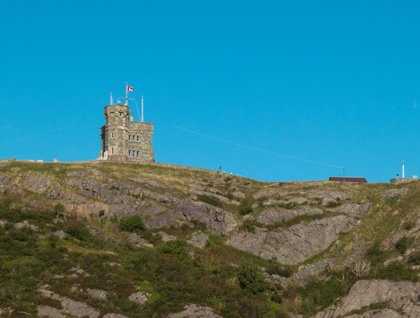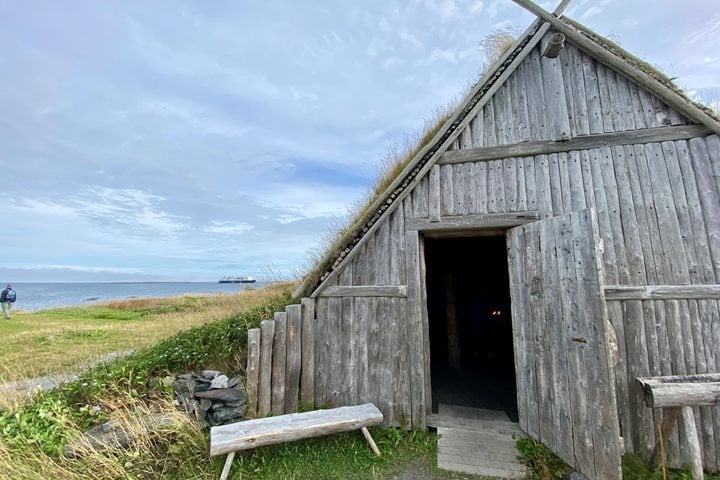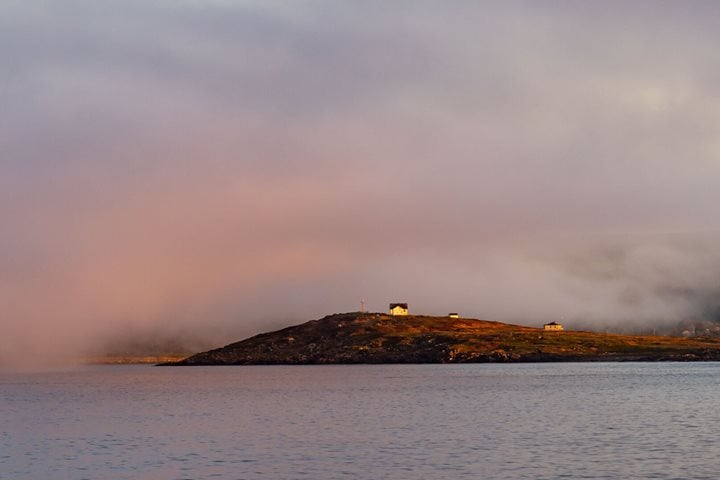The sea approach to St John’s is a spectacular one, a protected deep-water harbor, almost concealed from view, entered through a narrow channel. Once inside, vistas of the charming provincial capital open up; colorful plank-board houses bedecked with flowers rising up the steep hillsides, looking east to the early morning sun rising over the Atlantic Ocean. It is entirely appropriate that St John’s should face the ocean in this way for its history and that of the province have, as we have discovered, revolved around fishing in general and codfish in particular. The soils of Newfoundland are largely unsuited for agricultural production and the climate is harsh.
The story of the fishery was well told in the impressive cultural facility known as The Rooms, with a bilingual exhibit in English and Gaelic. In the early days of the Newfoundland fishery, ships would leave from Devon in the southwest of England and call at Wexford in the southeast of Ireland en route to collect provisions. Before long, those provisions were accompanied by seasonal labor which in turn became a resident fishery population in the multiplicity of coves and creeks along the Labrador and Newfoundland shore. In Irish Gaelic, Newfoundland was known as Tabhar an Eisc, the Fishing Ground. Over the years this Irish element in the populations has contributed to the religious and political culture of a province that gained its independence from Britain when the fishery began its slow decline, joining Canada in 1949.
The harbor was visited by John Cabot who explored this coastline in the celebrated 1497 Matthew voyage from Bristol, England. The Cabot Tower atop Signal Hill was built in 1897 to commemorate that voyage but the hill itself, a distinct geomorphological feature, was used by the British for centuries as a signal station. It was at this spot that Marconi received the first transatlantic wireless transmission.
Our tour of the surrounding countryside included Cape Spear, billed as the most easterly point on the North American continent, with breathtaking ocean views and fine displays of Michaelmas daisies along the cliffs. A climb up to the historic lighthouse provided an even better vantage point but still not high enough to see the Emerald Isle, as some had hoped. The lighthouse was built in 1835 and was in continuous operation from 1836 to 1955. Close by, the charming Petty Harbour had a “mini aquarium” which provided an engaging introduction to the marine life of the Newfoundland shores.









